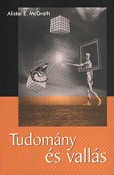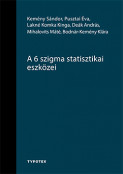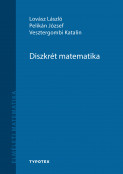
Oldalszám: 332 oldal
Formátum: B/5
ISBN: 978-963-9326-63-7
Témakör: from English
Eredeti ár: 2800 Ft
McGrath's argument in this book is schematic. He begins with three turning points in the history of science: the Copernican and Galilean controversies, the mechanistic universe of Newton and the upset caused by Darwin's theory of evolution. According to McGrath, these landmarks shaped the question of whether religion is an "ally" or an "enemy" of science. It is his contention that both responses have had considerable impact on religion over the last two centuries, in the form of liberalism, modernism, neo-orthodoxy and evangelicalism. These four strands of Christian theology have developed both confrontational and nonconfrontational models of the relationship between religion and science. McGrath outlines the impact of philosophers of science, such as Karl Popper and Thomas Kuhn, on religion as well as the impact of the philosophy of religion on scientific questions. He also explores the use of models and analogies in science and religion and devotes two chapters to an examination of issues and case studies. Most helpful are his short summaries of the positions of key thinkers in this dialogue: Ian Barbour, Arthur Peacocke, John Polkinghorne and Pierre Teilhard de Chardin, among others. McGrath's book provides a useful starting point for those entering the study of science and religion.
“This introduction to the relationship between science and religion is written with Alister McGrath's usual lucidiry and clariry. One particular strength is the assurance with which he considers theological ideas fin scientific context.” – Fraser Watts, Starbridge Lecturer fin Theology and Natural Science, University of Cambridge
“This work by a former scientist, now well known for his theological studies, expounds fin an easily admissible and fair-minded manner the significant, and increasingly urgent, issues involved fin the complex interactions between science and religion, especially Christianiry. It is strongly recommended as a very readable and accessible introduction for the increasing number of those of all ages who are deeply concerned with such issues yet who inevitably fend themselves lacking fin their knowledge of religion and theology, or of any of the sciences; or of the bridging discipline of philosophy. – Dr Arthur Peacocke, Director, Ian Ramsey Centre, University of Oxford
This text introduces readers to the fascinating interaction of science and religion. It is specifically designed for students on science and religion courses who have little or no prior knowledge in either area.
The book offers unusually wide coverage, looking at the historical, theological, philosophical, and scientific aspects of the interaction of science and religion. It is also thoroughly up to date, and indudes interaction with issues mised by Richard Dawkins concerning evolution, and the "anthropic principle"fin relation to cosmology. Although focusing mainly on Christianiry, the text also indicates the importance of other religions.
About the Author
Alister E. McGrath, the best-selling author of Christian Theology: An Introduction and other successfill theological texts, is known for the clariry of his writing. He has studied widely in both science and religion and is therefore well placed to write the ideal text for science and religion courses.










